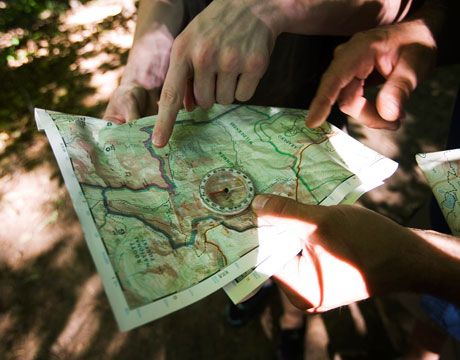Essential Tips on How to Read a Map That Will Change Your Travel Experience
Reading a map is a skill that has guided humans for centuries, from ancient explorers navigating uncharted lands to modern travelers relying on digital maps. Understanding how to interpret maps accurately can enhance travel experiences, improve navigation, and even save lives in emergency situations.
- History of Map Reading
- Key Facts About Map Reading
- Timeline of Map Reading Evolution
- Significance of Learning to Read a Map
- 7 Essential Tips to Read a Map
- Daily Life Impacts
- Observance and Important Points
- FAQs About Map Reading
- Social and Cultural Significance
- Wishing and Inspirational Perspective
- Conclusion: Importance in Daily Life and Society
This guide provides a detailed history, practical tips, facts, FAQs, timeline, significance, and societal impact of map reading, all written in a human-friendly style. By the end, you’ll not only understand maps better but also appreciate their value in daily life and global exploration.
History of Map Reading
Map reading has evolved dramatically over thousands of years:
Ancient Times: The earliest maps were drawn on stone, clay, or animal skins. They often depicted local territories or celestial patterns. Ancient Babylonians and Egyptians used maps for navigation and territorial planning.
Greek Era: Greek scholars like Anaximander and Ptolemy contributed significantly to map-making, introducing concepts like latitude and longitude.
Middle Ages: European maps were often symbolic, reflecting religious or political views rather than accurate geography.
15th–17th Century (Age of Exploration): Maps became more precise as explorers like Columbus, Magellan, and Cook charted new territories.
18th–19th Century: Cartography advanced with surveying tools, compasses, and triangulation methods. Maps became essential for military, trade, and urban planning.
20th Century: Topographic maps, aeronautical charts, and GPS technology revolutionized navigation.
Modern Era: Digital maps and mapping apps allow instant access to global locations, yet traditional map-reading skills remain valuable for critical thinking and situational awareness.
Key Facts About Map Reading
Types of Maps: Political, physical, topographic, thematic, and navigational maps each serve different purposes.
Map Symbols: Represent natural and man-made features; learning symbols is key to accurate reading.
Scale: Shows the ratio of map distance to real-world distance, crucial for estimating travel times.
Compass Rose: Indicates cardinal directions (North, South, East, West).
Grid Systems: Latitude and longitude lines help locate precise points on Earth.
Elevation Indicators: Contour lines or color gradients show terrain height and depth.
Importance in Safety: Map reading is critical for hikers, pilots, sailors, and emergency responders.
Cultural Significance: Maps document exploration history, territorial changes, and societal development.
Educational Tool: Enhances spatial awareness, analytical skills, and global understanding.
Digital vs. Physical Maps: Both have unique advantages; traditional maps encourage critical thinking, while digital maps provide instant data.
Timeline of Map Reading Evolution
3000 BCE: Earliest Babylonian maps on clay tablets.
600 BCE: Greek maps by Anaximander introduce early concepts of geography.
150 CE: Ptolemy’s “Geographia” influences map-making for centuries.
1400s–1500s: Age of Exploration maps chart new continents and trade routes.
1700s–1800s: Surveying and triangulation improve accuracy.
1900s: Topographic and aeronautical maps widely used.
1990s–2000s: GPS technology integrates with traditional cartography.
Present: Mobile mapping apps dominate, but manual map reading remains a valued skill.
Significance of Learning to Read a Map
Understanding maps is important for practical, educational, and social reasons:
Navigation Skills: Essential for outdoor activities, urban exploration, and travel planning.
Safety: Enables individuals to navigate unfamiliar terrain, avoid dangers, and plan escape routes.
Problem-Solving: Enhances analytical thinking and spatial awareness.
Historical Appreciation: Maps document human exploration, cultural shifts, and geopolitical changes.
Environmental Awareness: Topographic maps help understand natural landscapes and resource management.
7 Essential Tips to Read a Map
Understand the Legend: The legend explains symbols, colors, and lines. Always refer to it first.
Check the Scale: Compare distances on the map to real-world distances to estimate travel time.
Use the Compass Rose: Determine orientation to align the map correctly with surroundings.
Identify Key Features: Look for landmarks, roads, rivers, mountains, and cities.
Read Contour Lines: Understand terrain elevation, slopes, and potential obstacles.
Follow Grid Systems: Use latitude and longitude to pinpoint exact locations.
Combine with Observation: Use visual cues in the environment to cross-check map information.
Daily Life Impacts
Map-reading skills influence various aspects of daily life:
Travel Efficiency: Enables smoother navigation in urban and rural areas.
Emergency Preparedness: Helps locate shelters, exits, and safe routes.
Education: Enhances learning in geography, history, and environmental studies.
Outdoor Activities: Critical for hiking, trekking, sailing, and camping.
Technological Literacy: Understanding maps improves comprehension of GPS and digital mapping tools.
Observance and Important Points
When learning or using maps, consider these guidelines:
Practice Regularly: Regular use of maps strengthens orientation and navigation skills.
Cross-Reference Digital Tools: Use GPS and apps for accuracy, but verify with a physical map when possible.
Plan Ahead: Study maps before travel to understand terrain, distances, and key landmarks.
Respect Boundaries: Recognize restricted areas, private properties, and natural reserves.
Emergency Preparedness: Carry a physical map as a backup when digital devices fail.
Cultural Sensitivity: Some maps reflect political borders that may be sensitive in different regions.
Preserve Maps: Store physical maps safely to maintain readability and accuracy.
FAQs About Map Reading
Q1: Can I rely solely on digital maps today?
A: Digital maps are convenient, but traditional map-reading skills remain essential in areas with poor connectivity or emergencies.
Q2: How long does it take to become proficient at reading maps?
A: With regular practice, basic proficiency can be achieved in a few weeks, while advanced skills may take months or years.
Q3: Are maps still relevant in modern society?
A: Absolutely. Maps are used in urban planning, military strategy, disaster management, and environmental conservation.
Q4: What is the easiest type of map for beginners?
A: Simple road maps or topographic maps with clear legends are best for beginners.
Q5: Can map reading improve cognitive skills?
A: Yes. It enhances spatial reasoning, memory, analytical thinking, and problem-solving abilities.
Social and Cultural Significance
Map reading is more than a practical skill; it has cultural and societal importance:
Historical Documentation: Maps preserve historical events, discoveries, and territorial changes.
Cultural Exchange: Travelers and explorers share knowledge of geography and landmarks across societies.
Education: Maps are essential teaching tools in schools, fostering global awareness and cultural literacy.
Community Planning: Urban development and disaster preparedness rely heavily on accurate map interpretation.
Wishing and Inspirational Perspective
Learning to read maps empowers individuals to:
Explore Confidently: Navigate new environments without fear.
Understand the World: Appreciate geographical diversity and cultural heritage.
Enhance Problem-Solving: Approach challenges logically using spatial reasoning.
Promote Safety: Be prepared for emergencies and unexpected situations.
Foster Independence: Gain confidence in decision-making and self-reliance during travel.
Conclusion: Importance in Daily Life and Society
The ability to read a map is a timeless skill that remains highly relevant in today’s fast-paced world. From historical exploration to modern navigation, maps continue to guide humanity, offering insights into geography, culture, and societal development.
In daily life, map-reading skills improve travel efficiency, safety, and decision-making. They enhance educational experiences, outdoor adventures, and even digital navigation literacy. Societally, maps document human progress, influence urban planning, and facilitate global understanding.
By mastering how to read a map, individuals gain not only practical navigation skills but also a deeper appreciation for the interconnectedness of the world. This knowledge empowers travelers, students, and professionals alike to navigate confidently, explore responsibly, and engage meaningfully with the environment and society.








